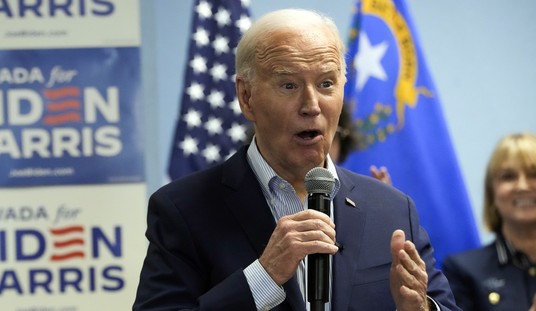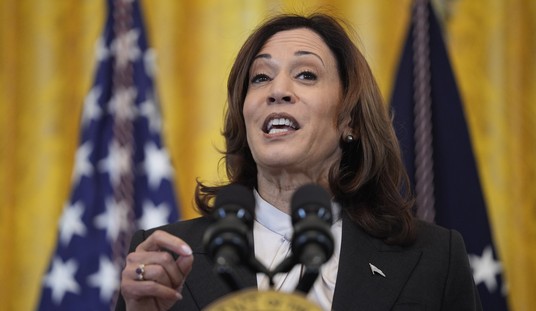“There’s sequestration and then there’s sequestration.”
-- Senior House GOP leadership aide talking to Power Play about automatic cuts built into the August debt-ceiling deal.
Members of Congress have been talking about the debt-ceiling supercommittee’s Nov. 23 deadline with melodrama worthy of a telenovela.
Will they get a deal? Will they go big? Will they alter the government’s spending trajectory? Will they save the republic?
Before we get sucked into the plot-twists and cliffhanger endings, let’s first remember how we got here and what this supercommittee really is. This is not the supercommittee to save the republic or the supercommittee to eliminate the deficit. This is the debt-ceiling supercommittee.
Right now, the federal government is some $260 billion away from hitting its $15.2 trillion credit limit – that’s enough to last until mid-January at current borrowing levels.
Under the terms of deal struck in August between President Obama and congressional Republicans, the debt limit has already been hiked by $900 billion in two tranches. In exchange, Congress enacted $917 billion in decreases to scheduled increases in federal spending over the next decade. (These are like cuts, but not really. Spending will go up, but just not as much.)
The deal also created a 12-member supercommittee to consider ways to decrease the growth of future deficits (again, like deficit reduction, but not really). If the unprecedented panel comes up with $1.5 trillion in deficit trims or more that pass Congress by year’s end, the August deal would provide the executive branch with a $1.5 trillion debt-limit increase (about 375 days of borrowing) at the end of the year, the sixth increase of Obama’s presidency.
Recommended
The supercommittee can aim lower, though, and reduce borrowing for the next decade – on track to go up by more than $10 trillion – by only $1.2 trillion. If they clear the lower bar, the president only gets 300 days or so worth of borrowing power.
If the supercommittee either doesn’t come up with a recommendation or Congress rejects what the panel produces, the president gets $1.2 trillion in borrowing power anyway, but it triggers an across-the-board reduction to scheduled spending between 2013 and 2021 (exempting Social Security, Medicaid, civil and military employee pay and veterans’ benefits).
The Obama administration, eager to maximize pressure on Republican negotiators, is now making dire warnings about the national-security consequence of subjecting military spending to these automatic reductions, even though the president says the trigger should be left in place. Some congressional Republicans (and hawkish Democrats) have vowed to dismantle the whole Rube Goldberg contraption because of the mandatory Pentagon trims.
But doing that might provoke another debt-ceiling crisis and again raise the prospect of shutting down 40 percent of the government indefinitely as Obama’s borrowing power expired. This would increase the threat of further credit downgrades. Finding a large enough coalition to take that risky path would be tough, of course if there’s any agency that could do it, it’s the Department of Defense.
But the current conversation mostly overlooks the fact that partial failure is an option.
Republican Rep. Jeb Hensarling, the foreman of the GOP side on the supercommittee, has discussed the possibility of kicking half of the can farther down the road – approve a suite of reductions to future increases now and then have a second panel (Would that be the super-supercommittee? The super-duper committee?) get together next year and figure out how to overhaul the tax code in such a way that it would provide the government with more money but not really increase taxes.
Under this scenario, the remainder of the $1.2 trillion in debt-limit increases would be put into a second trigger mechanism. For example, if Congress approves $800 billion in decreases to future spending increases now (using some creative accounting on scheduled draw downs in Afghanistan and Iraq, the sale of bandwidth by the FCC, etc.), that would leave $400 billion for the tax simplification committee to either find in the tax code or see that sum in automatic, across-the-board reductions imposed.
The idea of getting House Republicans to sign off on an election-year tax-writing panel sounds kind of farfetched. They understand that they could be backed into a corner (“protecting millionaires and billionaires”) just months before elections. They might be left with either voting for a tax increase, a real loser, or subjecting themselves to Democratic attacks for protecting the “1 percent.”
But the idea of the special tax committee does give us an idea where this train is actually headed.
Democrats want Republicans to look petty and greedy in these negotiations and have accordingly raised the stakes for the panel, even calling for more stimulus, and made dire warnings about its failure. Republicans, meanwhile, are desperate to look reasonable on the issue of taxes on rich people and corporate loopholes. Even though federal spending has yet to go down a whit, GOPers worry that they look like a bunch of grinches. They figure if they kick the can again, maybe they won’t get their own cans kicked by voters.
But Democrats don’t really want to see the whole debt-ceiling deal go down in flames either. As much fun as they are having getting back at Republicans for a string of victories that began with the December 2010 deal to extend current tax rates through 2012, they also know that triggering a crisis right now would be a disaster. More likely, they would like to get something done now while President Obama is conveniently out of the country and get on with the business of running for re-election.
So here’s the scenario: The supercommittee coughs up its partial solution on Nov. 23 and presents to Congress $800 billion in reductions to future deficit increases. Creative accounting, some easy trims and maybe even a closed tax loophole or two and they will find that this is not so difficult.
While the two sides have been blustering at each other in public, staffers and key negotiators have been hard at work on the easy stuff. Just as when the Boehner-Obama negotiations for $4 trillion predictably devolved into the Cantor-Biden deal for $917 billion this summer, these guys have made sure to preserve a fallback position for themselves.
They can offer up the tax committee as a salve but the message would be – this is as far as we could go, let the automatic reductions do the rest. With the end of the year and the debt limit fast approaching, lawmakers could be free to grumble about the insufficiency of the deal and say they wished for either a) major entitlement reforms or b) major tax increases, but still vote for the partial package “with reservations.”
And then what do they do? Absolutely nothing.
Everybody goes home for Christmas and the automatic reduction machine kicks in, but now instead of automatically whacking the $1.2 trillion originally intended by the Dr. Stangeloves who built the August deal, it only has $400 billion to sequester. Spread out over nine years, that’s not a huge hardship when applied so broadly over the government.
And most importantly, if the future reductions become too onerous, Congress can always just undo them. They’ve been pushing off Clinton-era cuts to Medicare for 16 years, so it’s not so far-fetched to imagine that they might undo Pentagon cuts at a later date.
























Join the conversation as a VIP Member